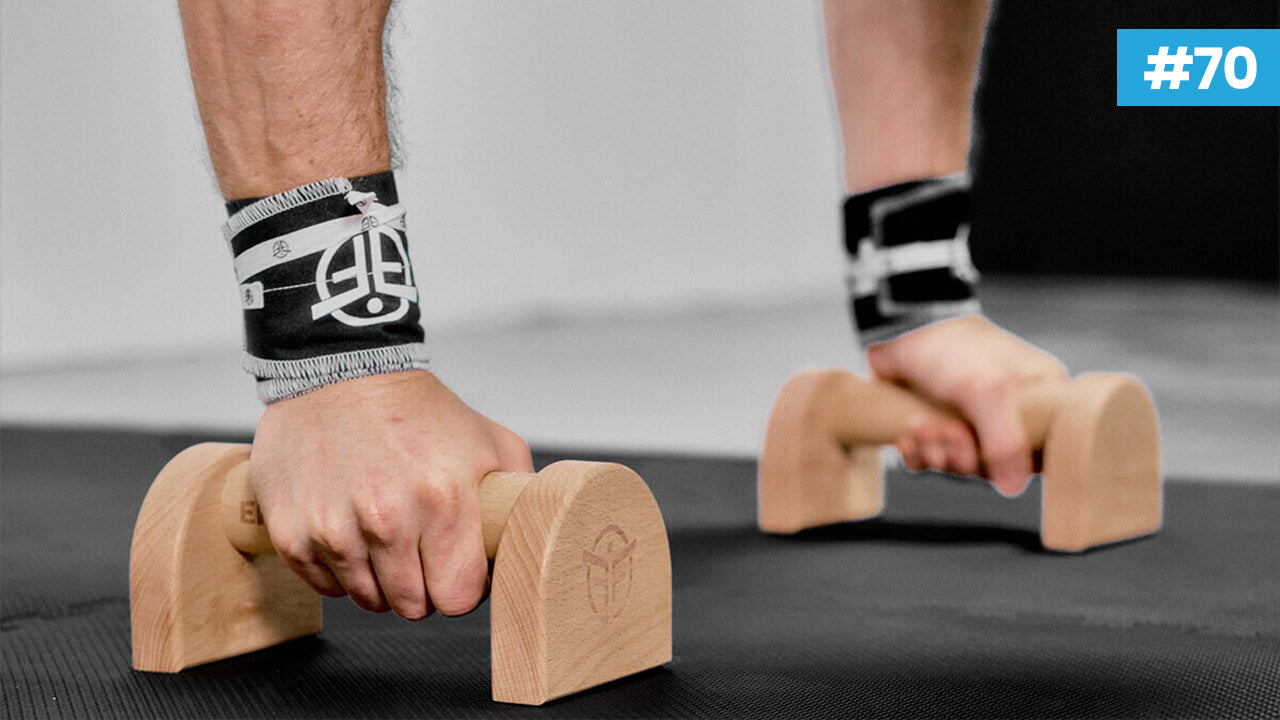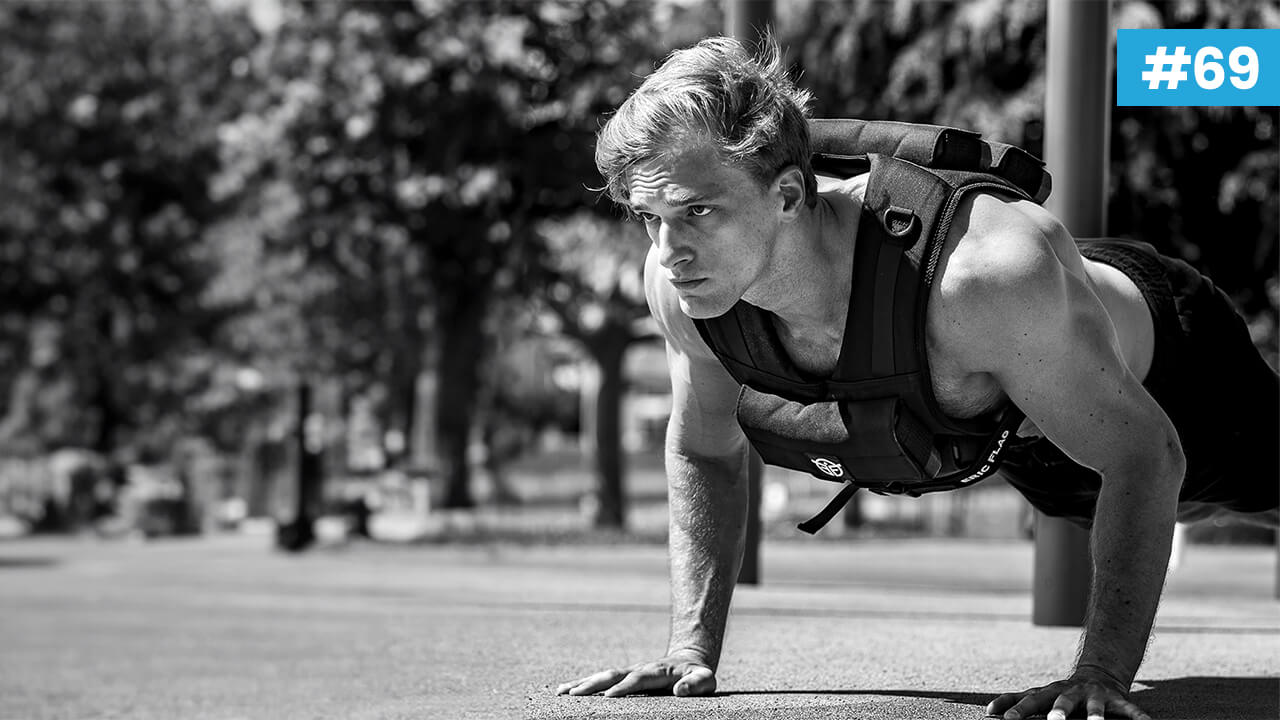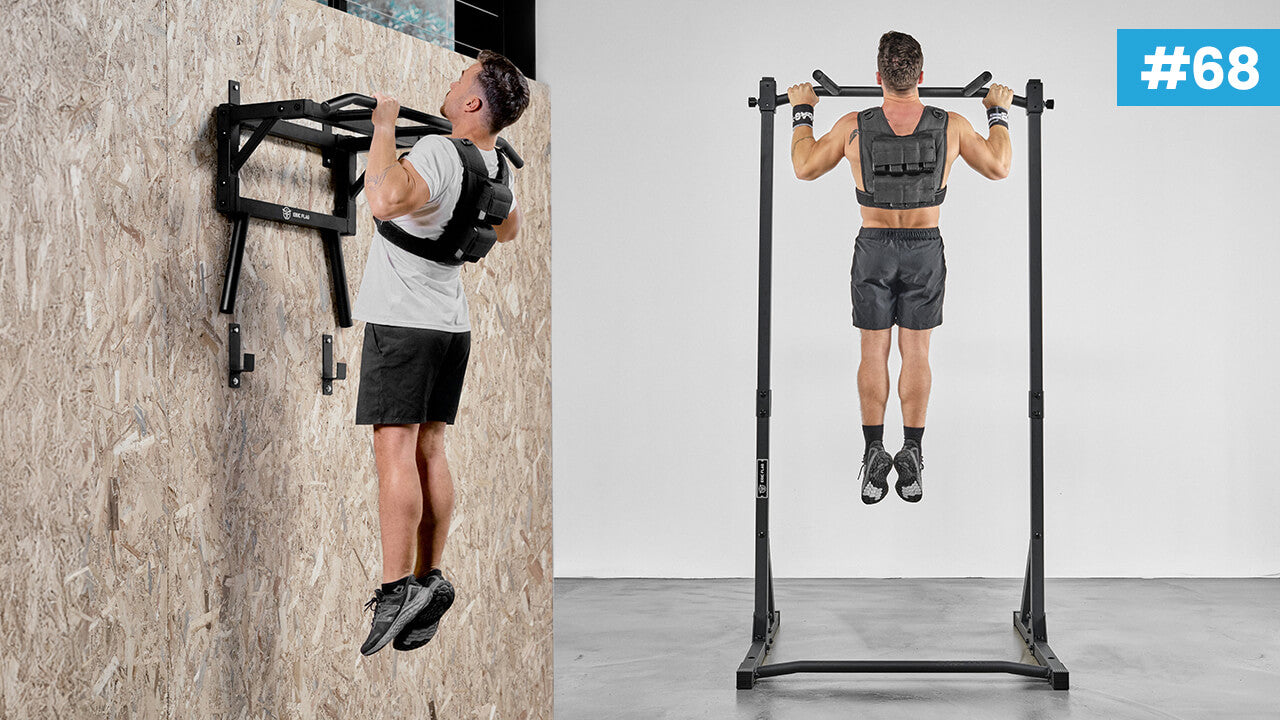Street Lifting: The Ultimate Beginner’s Guide
Want to combine strength, technique and training freedom? Then discover Street Lifting, an exciting discipline in which you push your limits with weighted bodyweight exercises.
Accessible to beginners and advanced alike, this sport boosts strength, endurance and coordination. The best part : you can train anywhere, outdoors or indoors, with very little equipment!
In this article, I’ll walk you through everything you need to know : the basics of the discipline, essential equipment and an ideal program to get you started.
Ready for the challenge? 💪
What is Street Lifting?
Street Lifting is a variant of Street Workout, focusing on muscular strength and endurance. Here, you perform bodyweight exercises, weighted for added difficulty.
Key movements: pull-ups, squats, dips and muscle-ups performed with added weight to further challenge your muscles and develop your overall power.
Basic street lifting exercises
Each exercise has its key role:
-
Pull-ups: mainly target the back. With ballast, you develop real pulling power and a strong upper body 👇
-
Dips The perfect way to strengthen triceps, pectorals and shoulders. This vertical movement is essential for building a powerful ribcage. 👇

-
Squats : They mobilize the whole of the lower body (quadriceps, glutes, ischios), while at the same time stimulating core engagement. With added weight, they become formidably effective for building strong legs. 👇

- Muscle-ups: an advanced movement combining pull-ups and dips, requiring strength and coordination. If you're just starting out, use preparatory exercises like the horizontal pull-up to progress smoothly 👇

Health and fitness benefits
Street Lifting is ideal for boosting your physical and mental fitness! By working on your strength and endurance, you'll develop balanced, solid and aesthetically pleasing muscles.
This discipline also improves coordination and mobility, thus limiting the risk of injury.
As an added bonus, Street Lifting reinforces the discipline and perseverance essential for lasting progress. You effectively train all your muscles, including your legs, for complete, harmonious fitness!
What you need to get started
To get off to a good start in Street Lifting, proper equipment is essential for your safety and comfort.
Here are the essentials:
- The weight belt (or weighted vest) is essential for intensifying your exercises, particularly dips or weighted pull-ups.
- The wrist straps protect your joints and strengthen your grip.
- For high-impact exercises such as squats, knee pads provide effective protection for your joints.
- Finally liquid chalk is ideal for improving your grip during pull-ups or muscle-ups, preventing slippage.
Choosing the right environment
Choosing the right environment is crucial to safe and effective street lifting.
You'll need sturdy, stable equipment, like a fixed pull-up bar, ideal for weighted pull-ups and muscle-ups.
If you prefer to work out outdoors, opt for a spacious area with plenty of headroom. Public parks or dedicated Street Workout areas are perfect for this.
In the gym, make sure you have the equipment you need, such as squat racks or weightlifting bars, to perform your exercises in the best possible conditions.
Street Lifting training program
Session 1:
Objective: Develop triceps, pectorals, legs and stabilizers.
-
Weighted dips: 4 sets x 6-10 reps
→ Choose a weight that allows you to complete the sets without breaking form. -
Weighted squats: 4 x 8-12 reps
-
Bodyweight ring dips: 3 x 10-15 reps
-
Active gainage (plank + leg extensions): 3 x 30 sec
Recovery between sets: 90 to 120 seconds
Session 2:
Objective: Strengthen back, arms and core.
-
Weighted pull-ups (pronation): 4 x 5-8 reps
-
Australian pull-ups (rings or low bar): 3 x 12-15 reps
-
Ab wheel or L-sit hold: 3 x 10 reps or 20 sec
-
Hollow hold: 3 x 20-30 sec
Add ballast only if you've mastered 8 strict bodyweight pull-ups.
Session 3:
Objective: Stimulate the whole body with a technical and dynamic focus.
-
Muscle-ups (assisted by an elastic band if necessary): 3-4 sets
-
Jump squats (or box jumps ): 3 x 10 reps
-
Pull-ups (pronation): 3 x 6-10 reps
-
Weighted Farmer Walk: 3 x 30-40 metres (or static if no space available)
This day aims to work on coordination, power and muscular balance.
In a nutshell
In short, Street Lifting is a complete discipline that boosts strength, technique and the freedom to train anywhere. To get started, get the right equipment, learn the basics like pull-ups, dips and weighted squats, and follow a clear, progressive program.
Always remember to protect your joints with the right accessories and choose a suitable training location. With discipline and regularity, you'll quickly improve your physical condition and reach impressive levels of strength.
Are you up to the challenge? Start Street Lifting now and reveal your full potential! 💪
FAQ
What equipment do you need to start Street Lifting?
To get started with Street Lifting, here's the essential equipment:
-
A sturdy pull-up bar
-
Parallel bars for dips
-
A weight belt to intensify your workouts
In addition, think about wrist straps or knee pads to protect your joints. Use magnesia for a better grip.
How do you gradually add weight without risking injury?
To safely add weight to your training :
-
Always start with a warm-up (5 to 10 min)
-
Gently increase the load
-
Maintain perfect technique before further loading
-
Avoid going too fast to stay in shape
-
Add assistance and mobility exercises to strengthen your weak points
What fundamental exercises should you master before using ballast?
Before ballasting, master these essential movements:
-
Upper body pull-ups
-
Dips for triceps, shoulders and chest
-
Muscle-ups for overall strength and coordination
-
Squats to strengthen legs and stability
How do you prepare for a Street Lifting competition and what are the criteria?
To be ready to compete :
-
Follow a structured training program: start with high volume at low intensity, then progress to heavy loads with fewer repetitions as competition approaches
-
Work specifically on competition exercises: squats, pull-ups, dips, and muscle-ups
To qualify, you'll usually have to perform at official qualifiers. Your results (accumulation of best charges) will determine your place and eligibility for regional, national or international competitions.






8 comentarios
It's really interesting. I advise everyone who sees this message to try street lifting at least once, it's incredible and I also advise you to listen to Eric Flag's advice.
Leo G
Great product, I've seen tests on youtube and everyone thinks it's great.
I'll be ordering in the near future to test the muscle ups with your program.nicolas
Thank you for this very complete article and for the little program to work all this out at home 💪🏻
Thelma
Article super intéressant
Thank you!
REVEL VINCENT
Great guide to recommend
thanks to you
Noah
Thanks for the little program! I knew the principle of this training method but it's always good to have a clear structure to progress effectively...
Hodé
Tip top cool between a few sips of Play.
KEVIN CORDONNIER
I highly recommend these sessions for building muscle!
Magnumlol
Dejar un comentario
Este sitio está protegido por hCaptcha y se aplican la Política de privacidad de hCaptcha y los Términos del servicio.